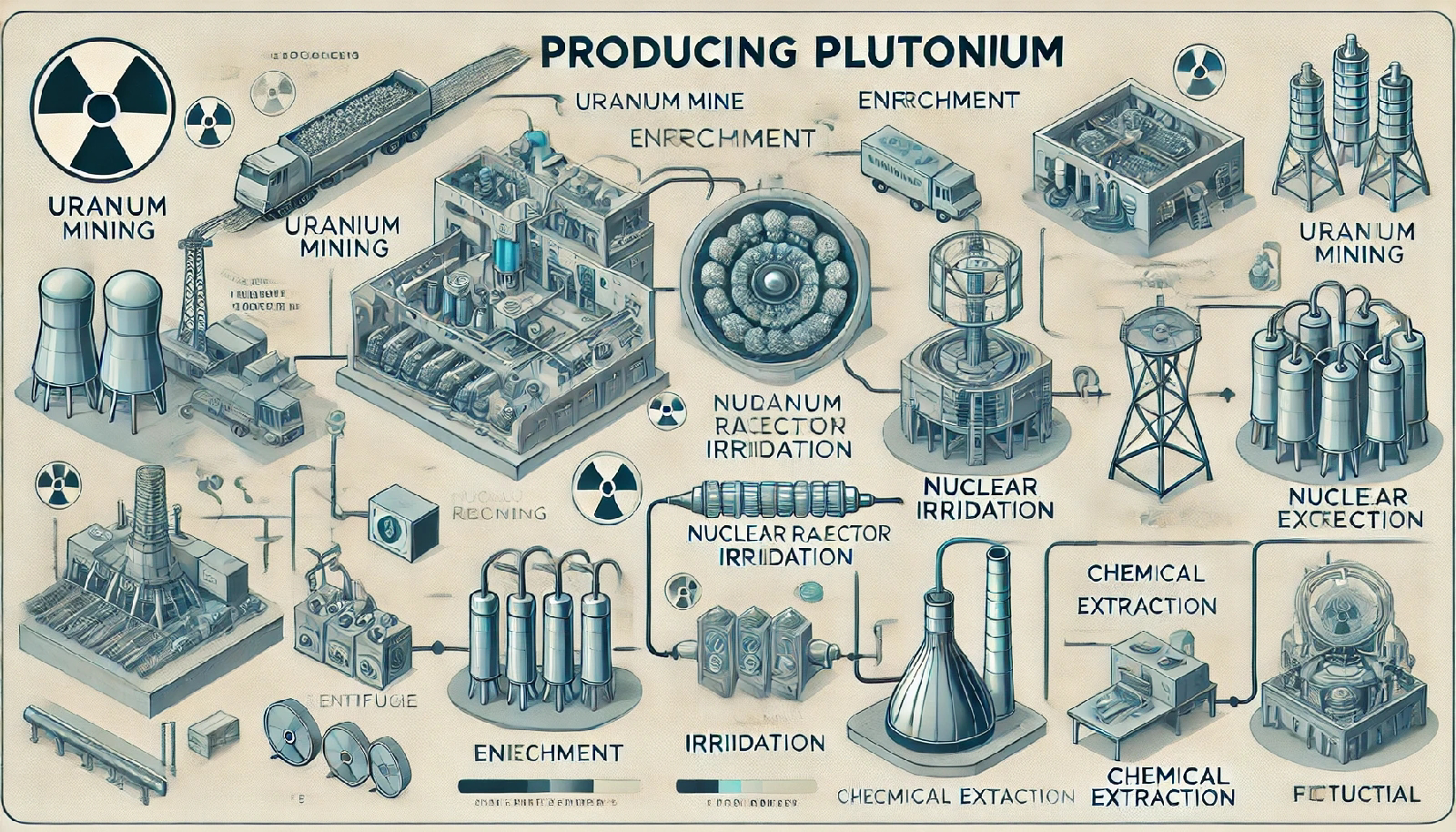Hi there, dreamers and deep thinkers,
Let’s talk about something that sounds like it belongs in a sci-fi thriller but is as real as the air you’re breathing—plutonium. This radioactive heavy metal isn’t just a footnote in nuclear history; it’s a linchpin for modern energy and a stark symbol of humanity’s scientific achievements and dilemmas. So, how do we create it? Strap in, because we’re about to dive into the fascinating (and slightly terrifying) process of producing plutonium.
What Exactly Is Plutonium?
Plutonium is a radioactive chemical element with the symbol Pu and atomic number 94. It’s not something you stumble upon during a casual walk in the woods—it’s mostly synthetic, meaning we create it in labs. Known for its silvery-gray appearance, it quickly oxidizes, forming a dull, dark coating. This metal has a split personality: it’s both a potent energy source and a harbinger of destruction.
In practical terms, plutonium has two main uses: as fuel in nuclear reactors and as a core component in nuclear weapons. Its dual-purpose nature makes it both a scientific marvel and a subject of intense global scrutiny. Now, let’s break down how it’s made.
Step 1: Mining the Building Blocks
Before you can make plutonium, you need uranium. Uranium is a naturally occurring element mined from the earth, primarily in countries like Kazakhstan, Canada, and Australia. Uranium ore, once extracted, undergoes a refining process to separate uranium oxide—aka “yellowcake”—from other elements.
Not all uranium is created equal. To be useful in plutonium production, you need uranium-238, the isotope that makes up over 99% of natural uranium. While it’s abundant, it’s chemically inert and needs a helping hand to become something more.
Step 2: Enrichment (A Fancy Word for Concentration)
The next step is enriching uranium to separate the isotopes. Natural uranium contains a small percentage of uranium-235, the isotope used in most reactors. Enrichment involves increasing the concentration of uranium-235 while keeping uranium-238 intact.
This process is typically done using gas centrifuges or gaseous diffusion, both of which sound more like magic tricks than actual science. The enriched uranium-238 becomes the starting point for producing plutonium.
Step 3: Irradiation in a Nuclear Reactor
Here’s where the magic—or nuclear alchemy—happens. The uranium-238 is placed inside a nuclear reactor, where it absorbs neutrons released during fission reactions. This neutron bombardment transforms uranium-238 into uranium-239.
But uranium-239 isn’t stable. Within days, it decays into neptunium-239, which then decays into plutonium-239—a process driven by radioactive decay. Voilà! You now have plutonium, but it’s not ready for prime time just yet.
Step 4: Extraction and Separation
After irradiation, the fuel rods containing plutonium are removed from the reactor. These rods are highly radioactive and need to be handled with extreme care. Specialized facilities, often called reprocessing plants, extract plutonium from the spent nuclear fuel.
The most common method is the PUREX process (Plutonium Uranium Redox EXtraction). It involves dissolving the fuel rods in nitric acid, then using chemical agents to separate plutonium and uranium. The result? A mix of plutonium isotopes, primarily plutonium-239.
Step 5: Refining Plutonium
The extracted plutonium isn’t pure—it’s a cocktail of isotopes, some more useful than others. To refine it, technicians employ additional chemical processes to isolate plutonium-239. This isotope is the gold standard for both energy production and weapons.
Refining requires precision and advanced technology, as even small errors can result in contamination or, worse, a criticality accident. Once purified, the plutonium can be shaped into metal forms, ready for its intended use.
The Uses of Plutonium
Plutonium’s most publicized role is in nuclear weapons. Just a few kilograms can unleash unimaginable destructive power, making it a cornerstone of nuclear deterrence strategies.
On the flip side, plutonium is a key player in generating nuclear energy. Mixed oxide (MOX) fuel, which combines plutonium with uranium, powers many modern reactors. It’s also used in space exploration; plutonium-238 powers radioisotope thermoelectric generators (RTGs), providing electricity for spacecraft like the Mars rovers.
The Risks and Controversies
Producing plutonium isn’t just complicated—it’s fraught with risks. Handling radioactive materials requires rigorous safety measures to protect workers and the environment. Even a minor slip-up can result in radiation exposure or contamination.
Then there’s the geopolitical side. The dual-use nature of plutonium makes it a hot topic in international security. Nations worry about the proliferation of nuclear weapons, leading to strict controls and treaties like the Nuclear Non-Proliferation Treaty (NPT).
Environmental Impact
The process of producing plutonium generates significant nuclear waste. This waste remains dangerously radioactive for thousands of years, posing storage and disposal challenges. High-level waste is typically stored in deep geological repositories, but these solutions are far from perfect.
Moreover, mining uranium—the starting point for plutonium—can have devastating effects on local ecosystems and communities. The environmental cost is a persistent reminder of the trade-offs inherent in pursuing nuclear technologies.
The Future of Plutonium
So, what’s next for plutonium? Advances in nuclear reactor design, like fast breeder reactors, aim to make plutonium production more efficient and sustainable. These reactors use plutonium as both fuel and a byproduct, creating a potentially closed-loop system.
There’s also ongoing research into alternative energy sources that might reduce reliance on plutonium. Solar, wind, and fusion energy are promising contenders, but for now, plutonium remains a cornerstone of nuclear technology.
A Balancing Act
Producing plutonium is a testament to human ingenuity, but it’s also a sobering reminder of the responsibilities that come with power. It’s not just about splitting atoms—it’s about understanding the ethical, environmental, and global implications of our actions.
Whether used for energy, exploration, or defense, plutonium reflects humanity’s endless quest to harness the universe’s hidden forces. The question is: how do we wield this power wisely?
Stay curious.




